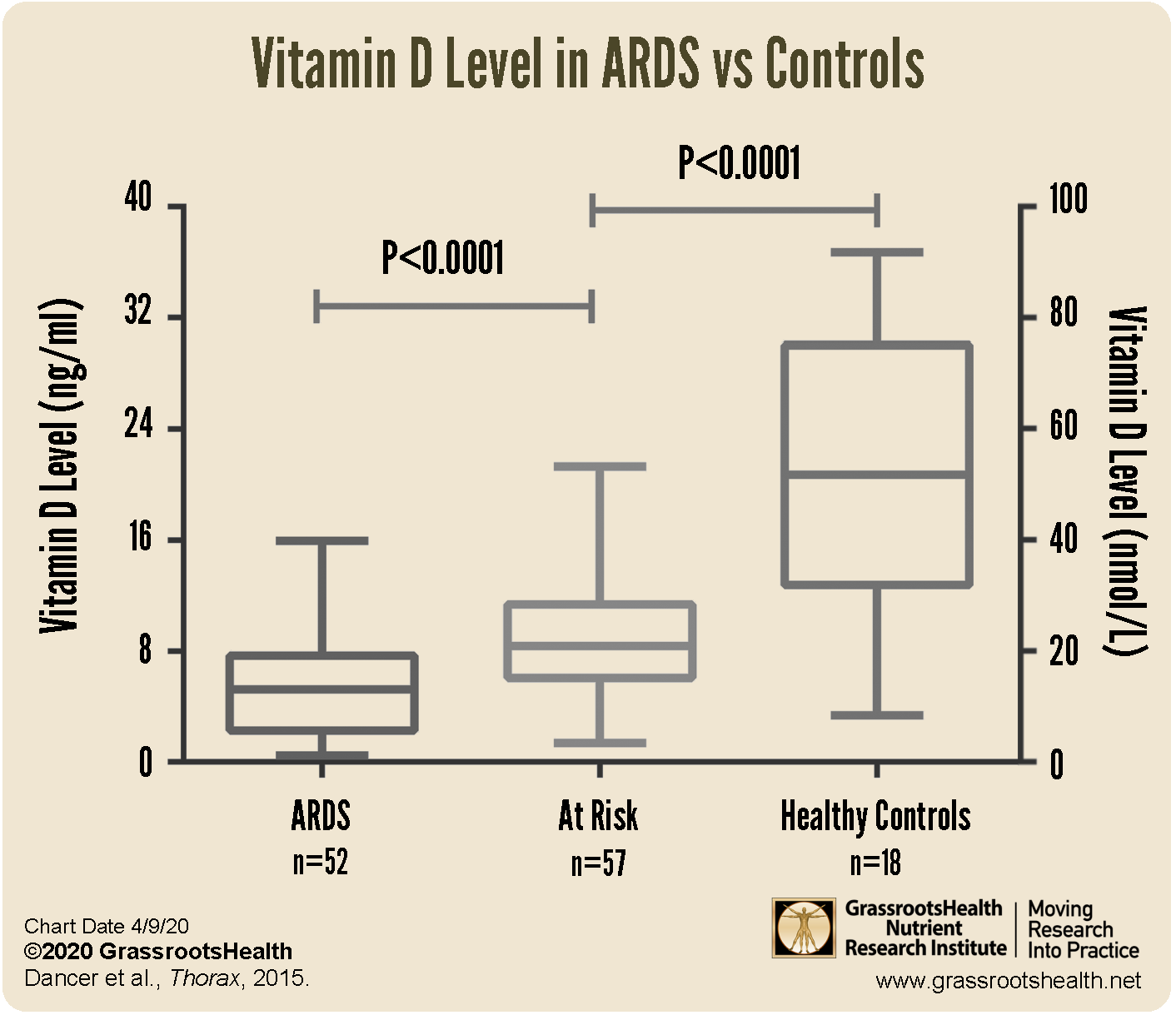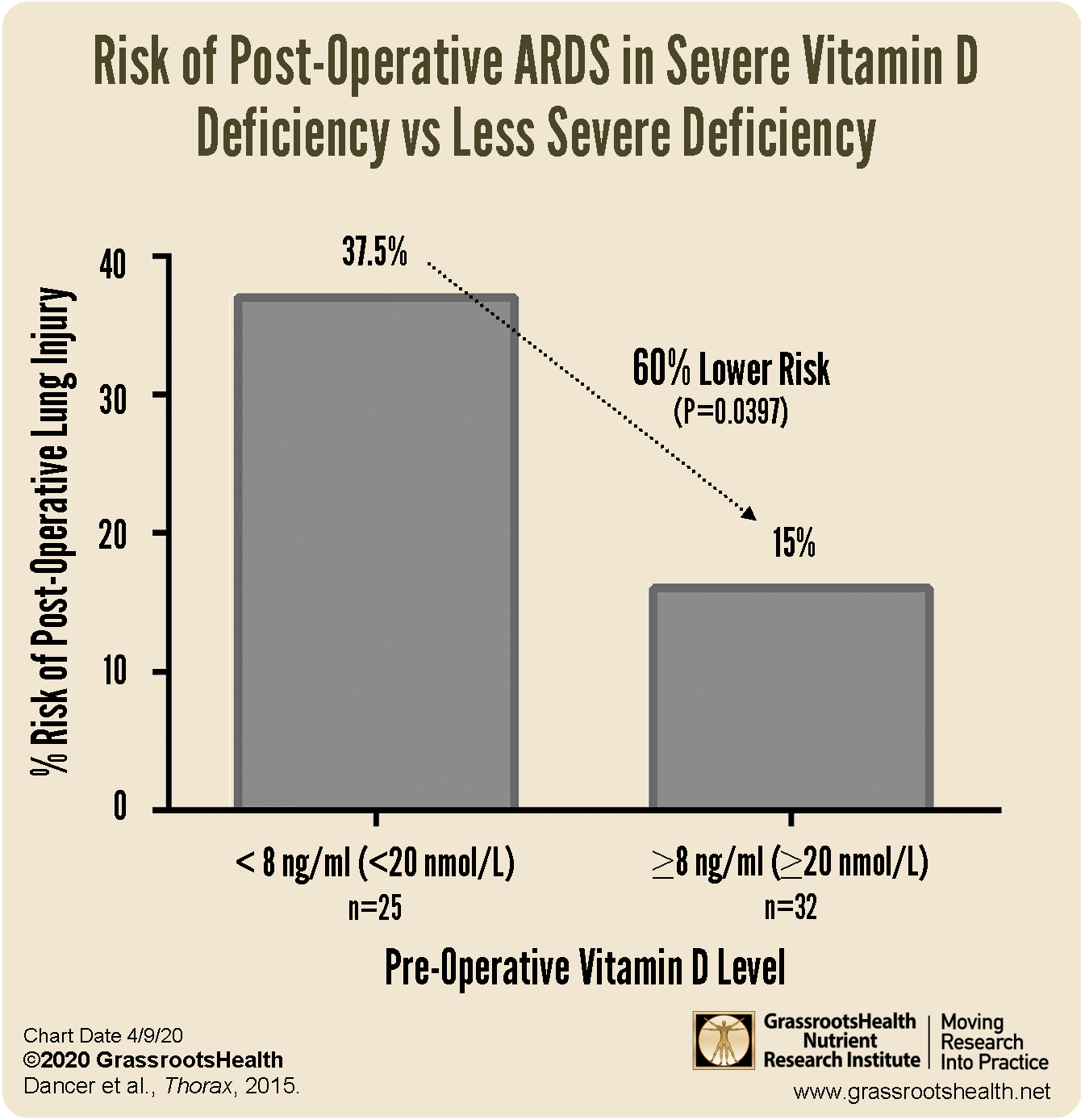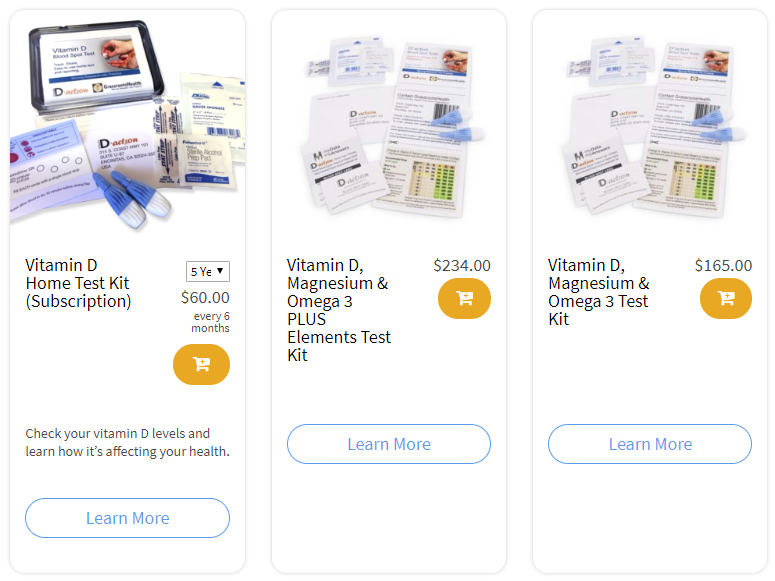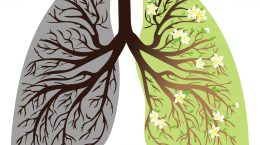Published on April 14, 2020
Acute Respiratory Distress Syndrome (ARDS, aka wet lung) is a condition resulting from severe respiratory injury or illness, such as pneumonia, in which the air sacs of the lungs fill with fluid, preventing the uptake of oxygen. The condition leads to shortness of breath and difficulty breathing, and in severe cases, can lead to sepsis and/or death. ARDS is currently a major complication and cause of death among those with serious COVID-19 infections.
 Cellular models have demonstrated the direct effect of vitamin D deficiency on the tissues within the lungs, which include increased alveolar inflammation, lung epithelial damage, and hypoxia (the deprivation of oxygen to surrounding tissues). This helps explain why vitamin D deficiency has been associated with an increased risk of developing pneumonia, ARDS and sepsis, and why correcting vitamin D deficiency prior to procedures of the upper respiratory tract such as oesophagectomy (surgery to the esophagus) prevented damage seen in deficient patients, as illustrated in the study below.
Cellular models have demonstrated the direct effect of vitamin D deficiency on the tissues within the lungs, which include increased alveolar inflammation, lung epithelial damage, and hypoxia (the deprivation of oxygen to surrounding tissues). This helps explain why vitamin D deficiency has been associated with an increased risk of developing pneumonia, ARDS and sepsis, and why correcting vitamin D deficiency prior to procedures of the upper respiratory tract such as oesophagectomy (surgery to the esophagus) prevented damage seen in deficient patients, as illustrated in the study below.
Vitamin D Deficiency Contributes Directly to ARDS
In an article in the journal Thorax, Dancer et al. present the findings of an investigation of the prevalence and severity of vitamin D deficiency among patients with ARDS in a clinical setting, as well as additional findings from mouse models. The clinical trials used included 52 patients with ARDS (vitamin D measured at enrollment), 57 patients at risk of ARDS who underwent oesophagectomy (a procedure known to increase risk of ARDS), and 8 patients undergoing the same procedure but who were treated with vitamin D prior to surgery (vitamin D levels measured pre-surgery).
In this study, vitamin D levels below 20 ng/ml (50 nmol/L) were considered deficient, and levels below 8 ng/ml (20 nmol/L) severely deficient. In addition to vitamin D levels, the amount of water in the lungs (extravascular lung water) was also measured to determine the severity of ARDS.
Findings from this Study
When comparing vitamin D levels among those with and at risk of ARDS, it was found that 96% of those at risk of ARDS were deficient in vitamin D, however, their levels were higher than those patients who already had developed ARDS. Both the at risk group and the ARDS group had significantly lower levels of vitamin D than healthy controls, as seen in the chart below.
This study also found that surgery patients with severe vitamin D deficiency had a 37.5% risk of lung injury post-surgery compared to a 15% risk for those whose vitamin D level was above 8 ng/ml (20 nmol/L), a 60% lower risk for those with higher vitamin D levels, as illustrated in the chart below.
Additional findings from this study include
- Patients who developed ARDS post-surgery and required ventilation had significantly lower vitamin D levels before surgery than those who did not develop ARDS.
- For those at risk of developing ARDS post-surgery, vitamin D levels before surgery was the ONLY measure to show a significant difference in whether or not patients developed lung injury after surgery
- After adjusting for other potential factors, those with vitamin D levels below 8 ng/ml (20 nmol/L) had a 4.2 fold higher risk of developing ARDS than patients with levels at or above 8 ng/ml
- Increased amounts of extravascular lung water was associated with severe vitamin D deficiency
- Overall, survival of ARDS was associated with significantly higher levels of vitamin D than non-survival
Could Your Risk of ARDS be Lowered with Vitamin D?
Do you know what your vitamin D level is? Be sure to test today to find out, and take steps to keep it within a target of 40-60 ng/ml or 100-150 nmol/L! Give your immune system the nutrients it needs to support a healthy you. Through GrassrootsHealth Nutrient Research Institute, you can also test your essential elements magnesium, copper, zinc and selenium, toxins such as lead, mercury and cadmium, as well as your omega-3 levels, inflammation levels and thyroid stimulating hormone (TSH) level. Find out your levels today! Log on to the test selection page (click the link below) to get your tests and see for yourself if your levels can be improved.
Make sure you track your results before and after, about every 6 months!
Click Here to Access the Test Page
How can I track my nutrient intake and levels over time?
To help you track your supplement use and nutrient levels, GrassrootsHealth has created the Personal Health Nutrient Decision System called
For each specific supplement, you can track what days you take it, how much, and many other details. This will help you know your true supplemental intake and what patterns of use work for you to reach and maintain optimum nutrient levels. Check it out today!










